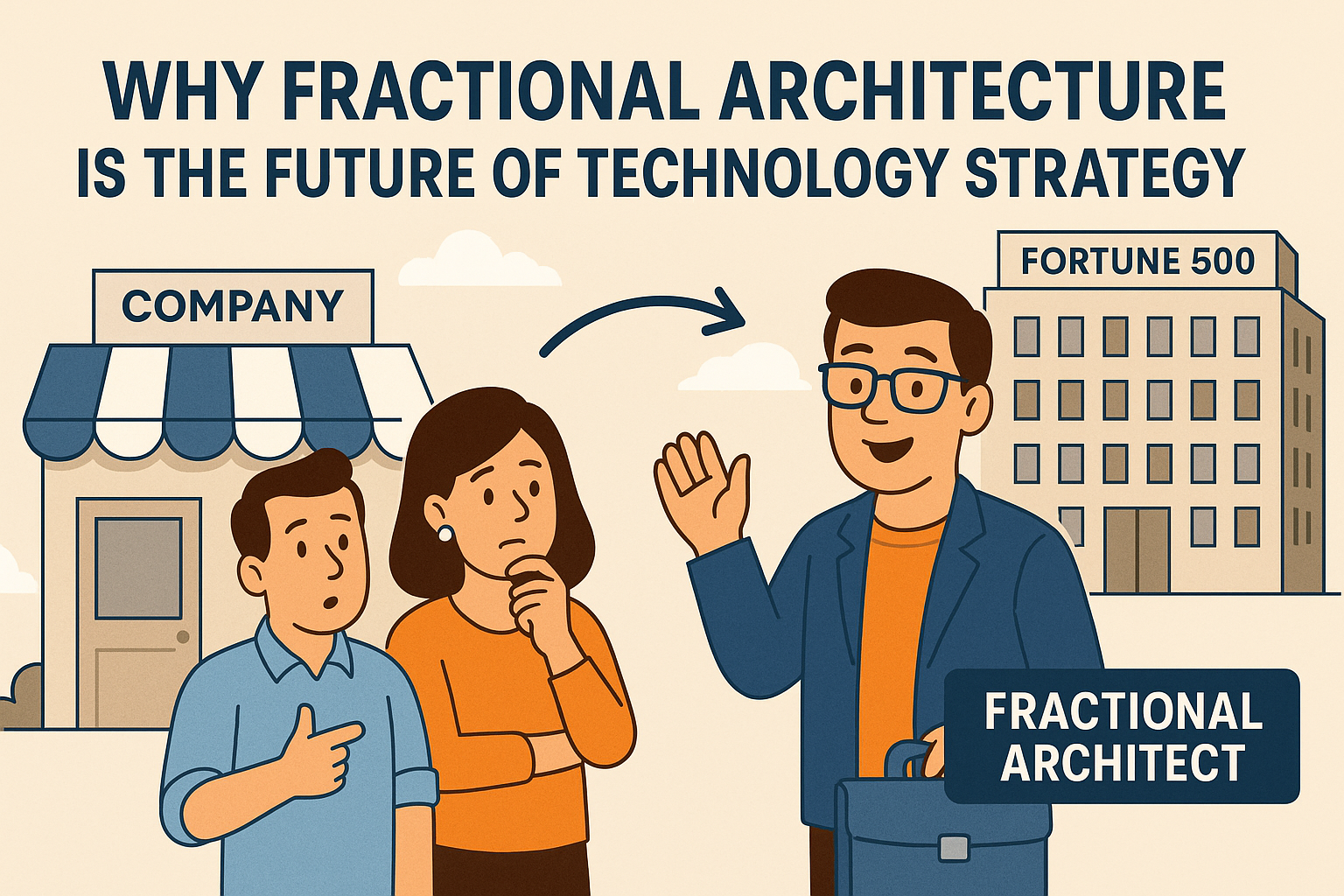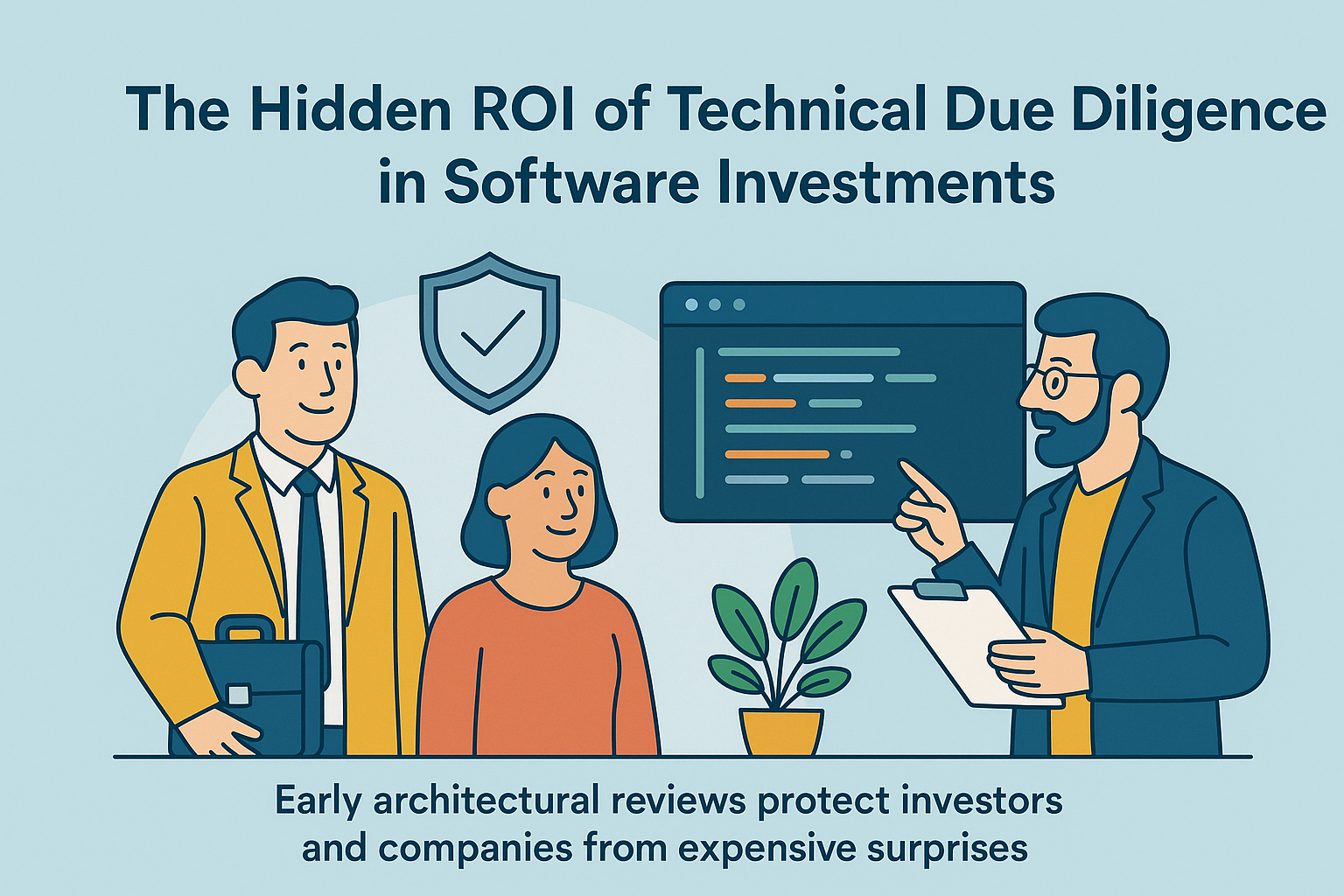
Secure Application Development Starts With Architecture
- Chris Woodruff
- October 9, 2025
- Business of Software
- business of software
- 0 Comments
If you're looking to enhance your organization's systems through quality assessments, I would love to connect with you. Let's explore how I can contribute to your success. You can easily reach me via my contact page here: https://www.woodruff.dev/contact/
Security cannot be patched in later; it is structural
Most organizations still treat application security as part of the endgame. They build, test, and deploy first, then scramble to patch vulnerabilities discovered too late. This approach creates a false sense of control. Security cannot simply be bolted onto a finished product. It is not a feature but a foundation. Decisions made at the architectural level determine how resilient, trustworthy, and defensible a system will be once it faces real-world threats.
When security becomes an afterthought, risk multiplies
Teams often prioritize security behind other priorities, such as speed, functionality, or user experience. Tight deadlines drive them to deliver visible features before reinforcing unseen safeguards. The result is predictable: applications that look polished on the surface but hide fragile internals beneath. Attackers thrive in these conditions, exploiting weak authentication mechanisms, misconfigured data storage, and overly permissive access policies.
The consequences extend far beyond technical failures. A single breach can damage customer confidence, lead to regulatory penalties, and undermine long-term business objectives. What appears to be a development shortcut becomes an expensive problem later. When security is excluded from architectural planning, the cost of retrofitting it can exceed the cost of building the system itself.
Architectural levers that determine security strength
Security-focused architecture requires a deliberate design mindset. Each layer of an application offers opportunities to strengthen protection. Architects influence outcomes through four key areas: identity, data, access, and infrastructure.
Authentication and authorization strategy
The first barrier between attackers and assets is identity management. Strong authentication ensures that users are who they claim to be. Effective authorization ensures that users can access only what they are authorized to access. Architecting a consistent identity strategy prevents loopholes and duplication. Centralized identity providers, token-based authentication, and role-based or attribute-based access controls create traceable and enforceable permissions.
Data encryption at rest and in transit
Data is the lifeblood of every application. Protecting it requires ensuring that sensitive information remains unreadable to unauthorized parties at all times. Encryption at rest secures databases, backups, and files even if the storage medium is compromised. Encryption in transit protects data moving between users, services, and APIs. Architectural decisions should embed encryption into system design, not treat it as an optional configuration. When encryption is enforced by default, the likelihood of unprotected data exposure falls dramatically.
Segmentation and least-privilege principles
Architectural boundaries are critical for limiting the impact of breaches. Segmentation divides systems into isolated zones where each service has access only to the resources it needs. Least privilege ensures that components, users, and processes operate with the minimum necessary permissions. Together, these principles prevent lateral movement during attacks. If one area is compromised, the attacker cannot easily reach another. Building segmentation into architecture also simplifies monitoring and containment.
Secure cloud architecture patterns
Modern applications increasingly rely on cloud environments, which introduce both flexibility and complexity. Secure architectures in the cloud use layered defenses: network isolation, secret management, and automated compliance checks. Cloud-native tools, such as identity-managed keys, private endpoints, and workload isolation, reinforce security at scale. The architectural goal is consistency. By using standard patterns for deployment, authentication, and monitoring, teams avoid the chaos of one-off configurations that introduce hidden risks.
The measurable benefits of security-first architecture
Architectural security produces more than peace of mind. It delivers tangible advantages across risk reduction, compliance readiness, and operational cost.
Reduced vulnerability surface
When security is built into architecture, the system naturally resists many common attacks. It becomes increasingly complex for an intruder to find an entry point, and even more challenging to exploit it. Continuous reviews of design patterns keep vulnerabilities contained and predictable.
Compliance readiness
Organizations operating in regulated industries must prove they protect data properly. A security-first architecture embeds these controls from day one. Logging, audit trails, and encryption standards align automatically with compliance frameworks. Instead of rushing to meet requirements under pressure, companies demonstrate readiness at all times.
Lower long-term costs
The cost of fixing vulnerabilities after release often dwarfs the cost of preventing them during design. Reactive security measures consume engineering resources and cause unplanned downtime. In contrast, early architectural investment ensures predictable costs. It also reduces the need for emergency remediation and crisis management.
Case example: The cost of ignoring architecture
A mid-sized technology company built an internal platform to consolidate customer data. The project moved fast, guided by an aggressive launch schedule. Security was left for the final phase. Weeks before rollout, penetration tests uncovered gaps in access control and unencrypted storage of sensitive identifiers. Fixing these issues required re-engineering major components, which delayed the release by four months and doubled the costs.
In contrast, another division within the same organization built a new application using a security-first framework. Identity and encryption requirements were integrated during design. Cloud configurations followed consistent templates. The project stayed on schedule and passed its security review without significant findings. The lesson was clear: security-first architecture does not slow development; it accelerates it by removing uncertainty.
The most secure applications are designed that way from the start
Security is not a phase that happens at the end of development. It is a continuous architectural responsibility that defines how systems operate and evolve. Teams that approach security reactively will always face costly surprises. Those that embed it structurally gain stability, trust, and efficiency.
The strongest systems are not those patched the most, but those planned with defense in mind. The architecture of a secure application reflects foresight, discipline, and respect for the users who depend on it. Building that foundation early ensures that the system remains resilient long after the first release.




